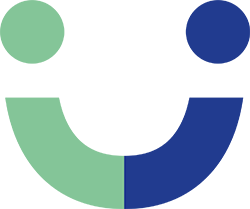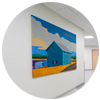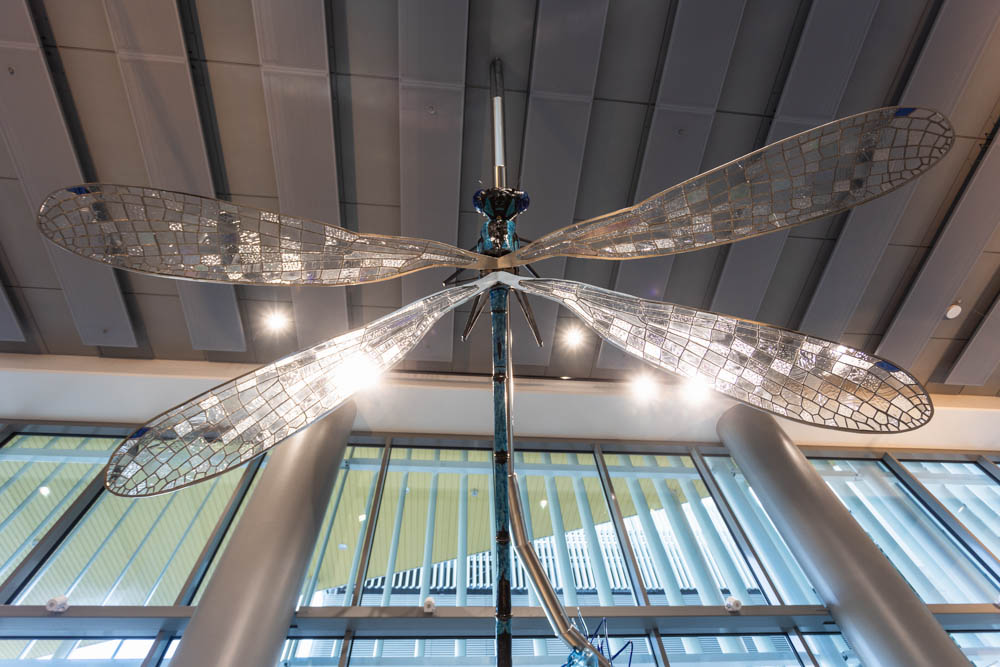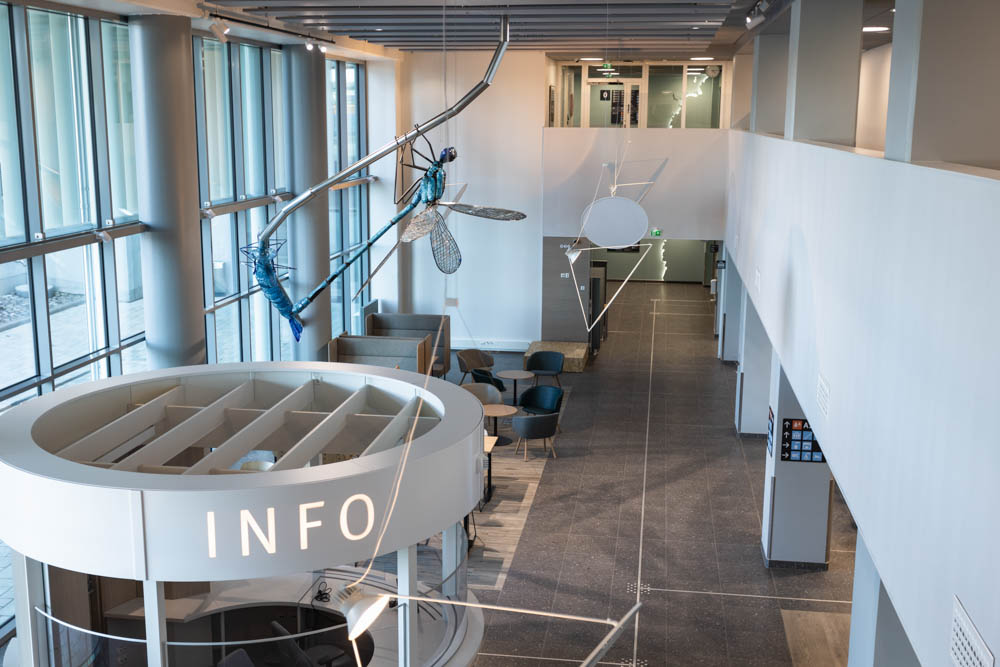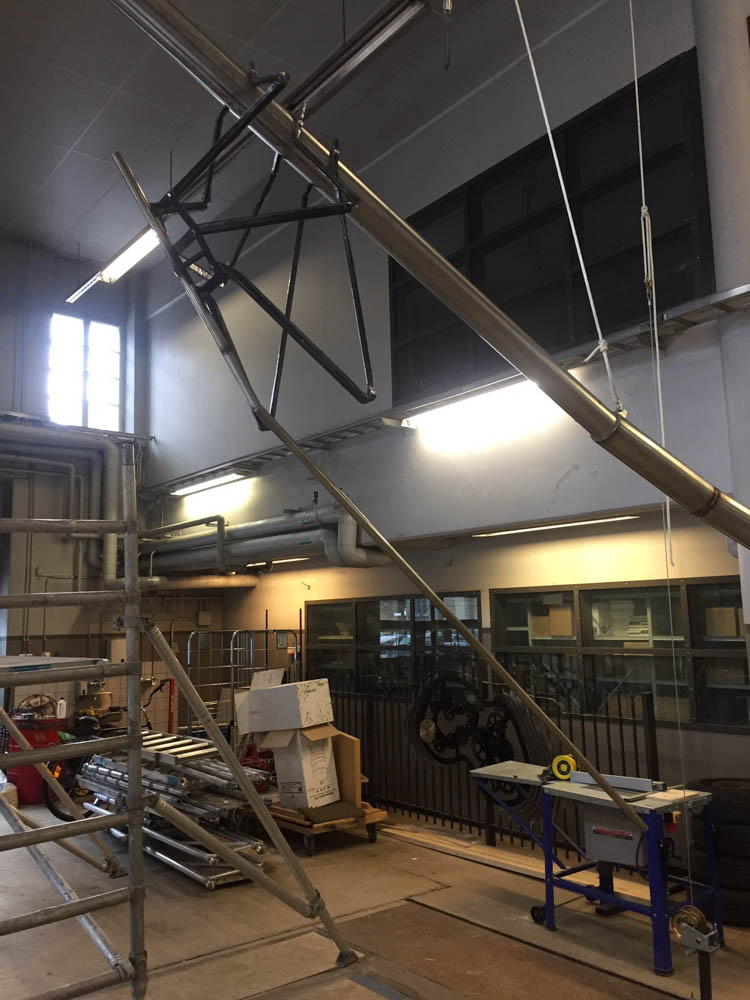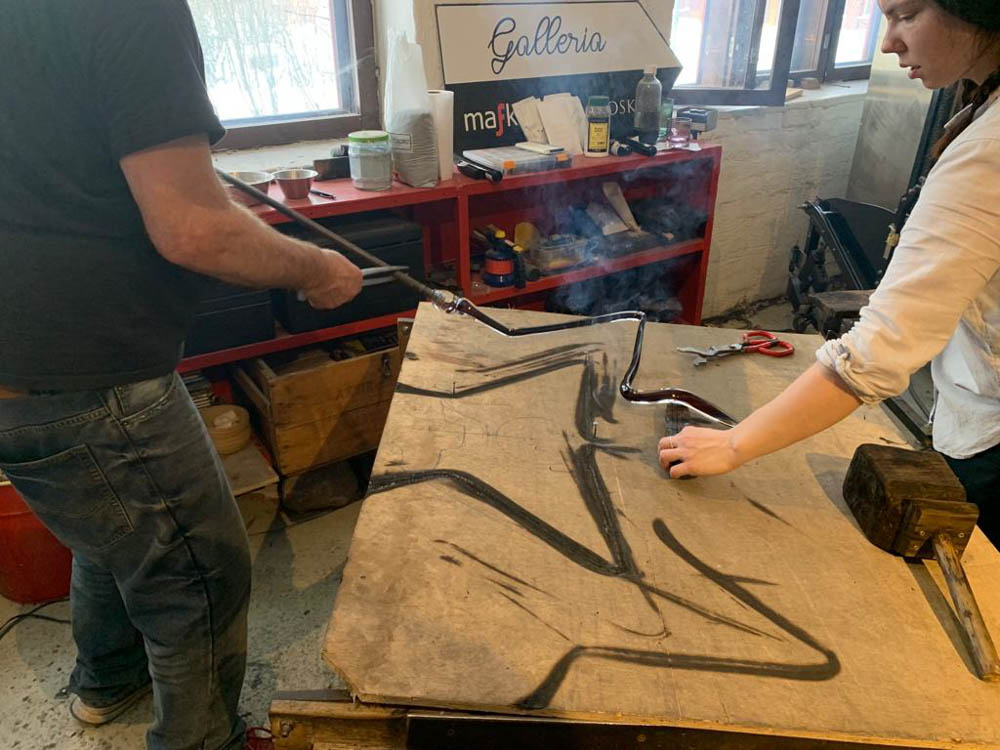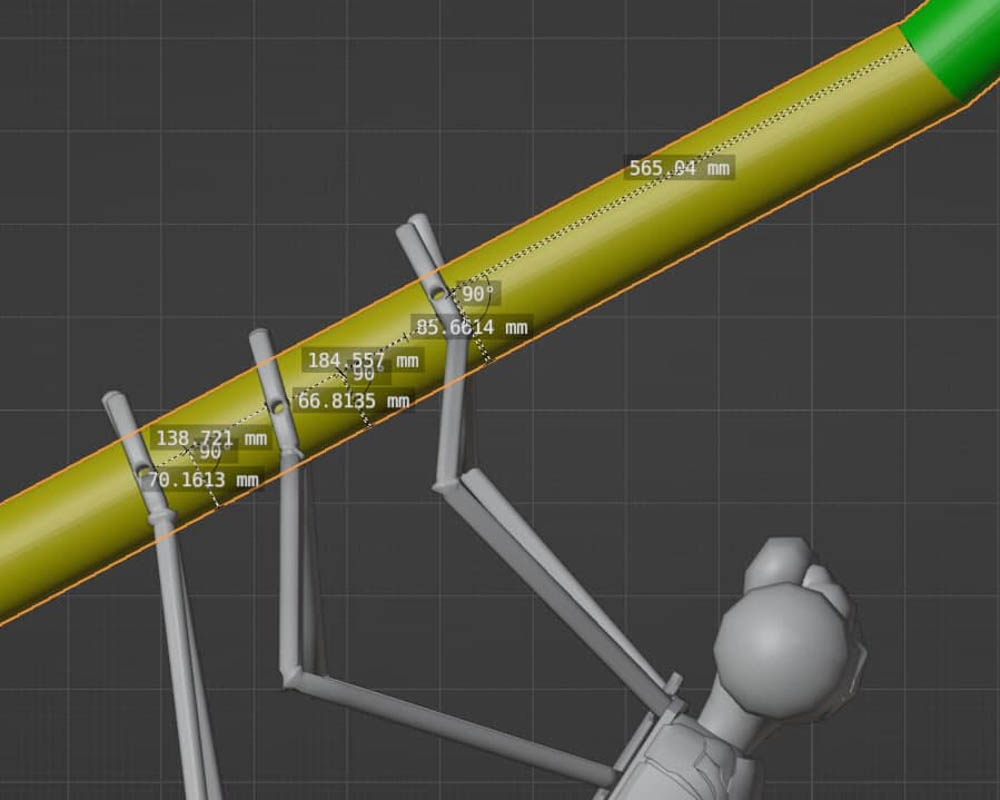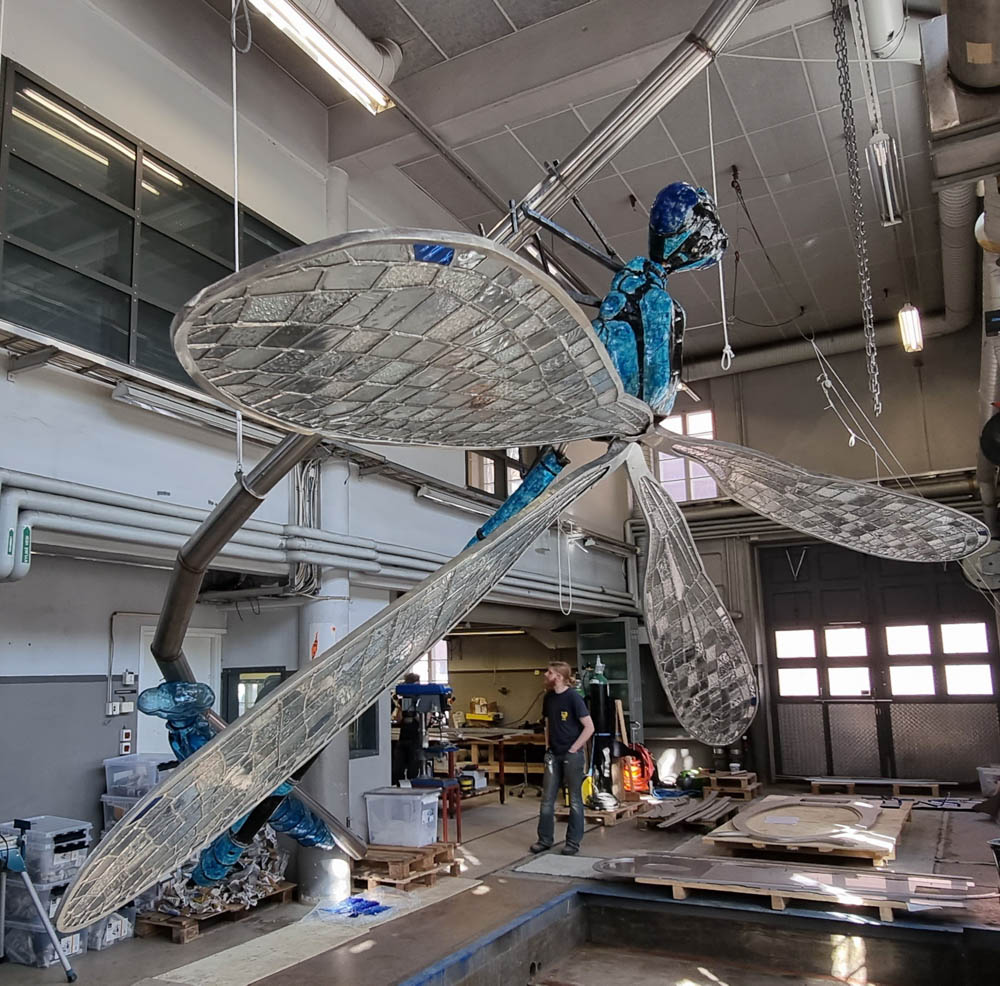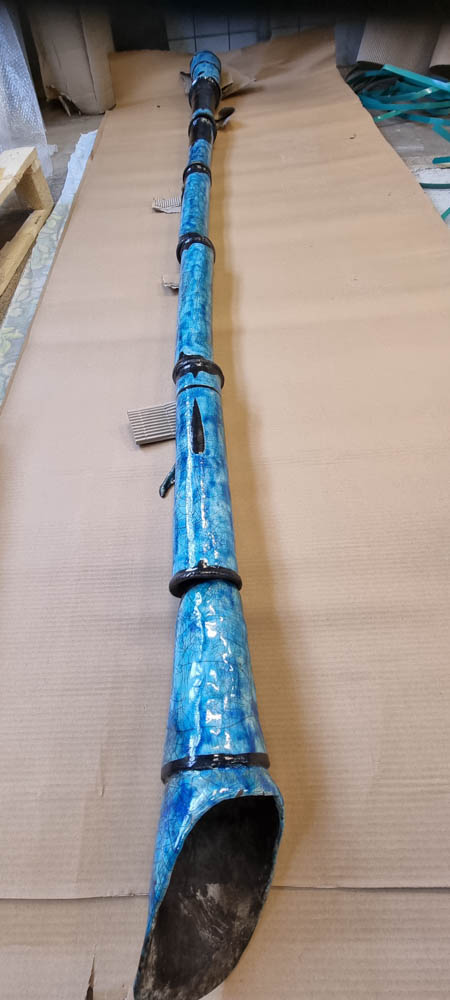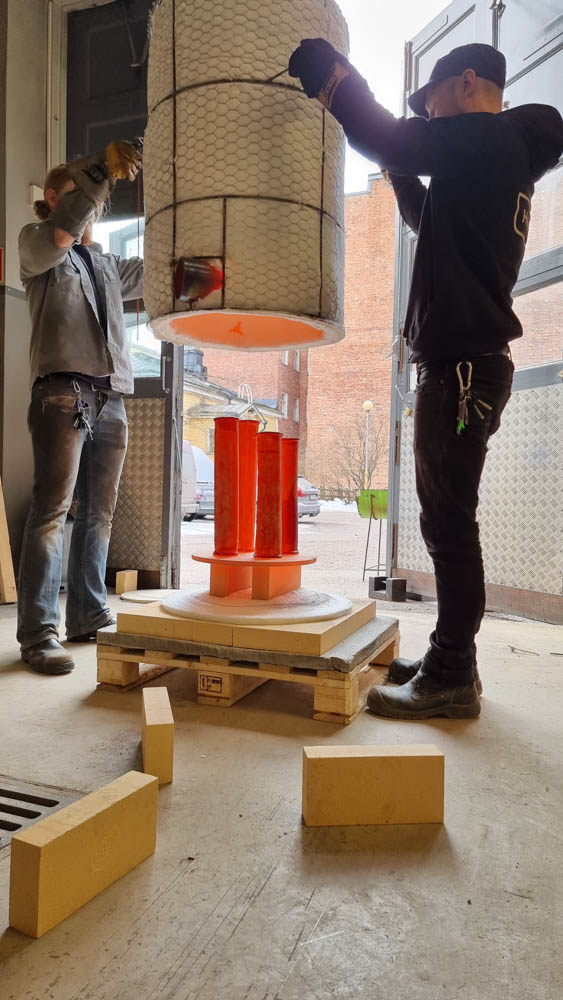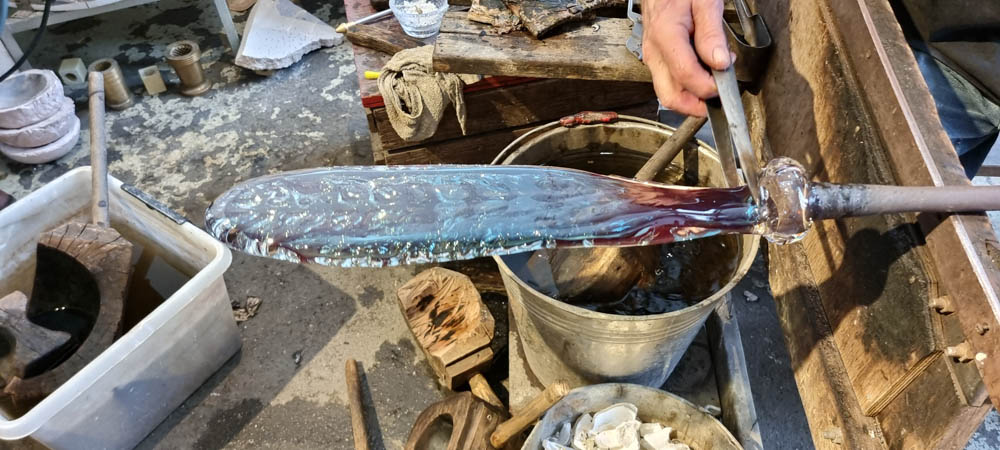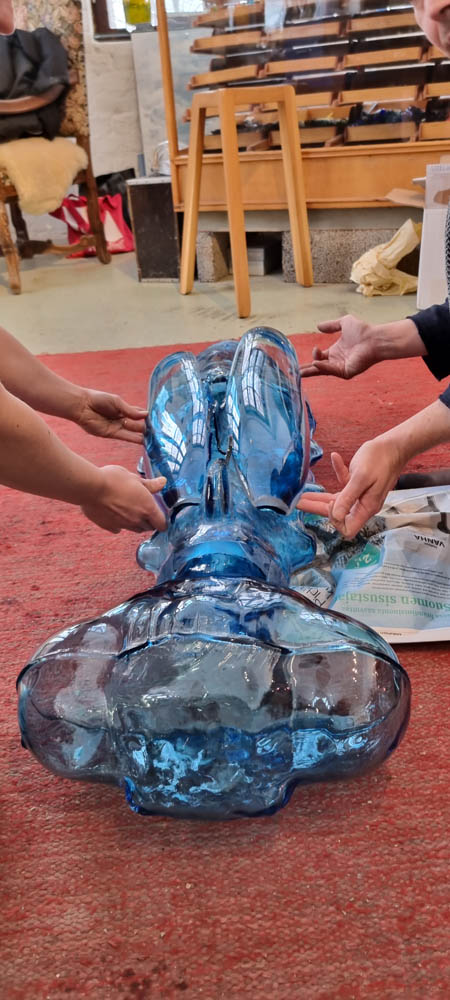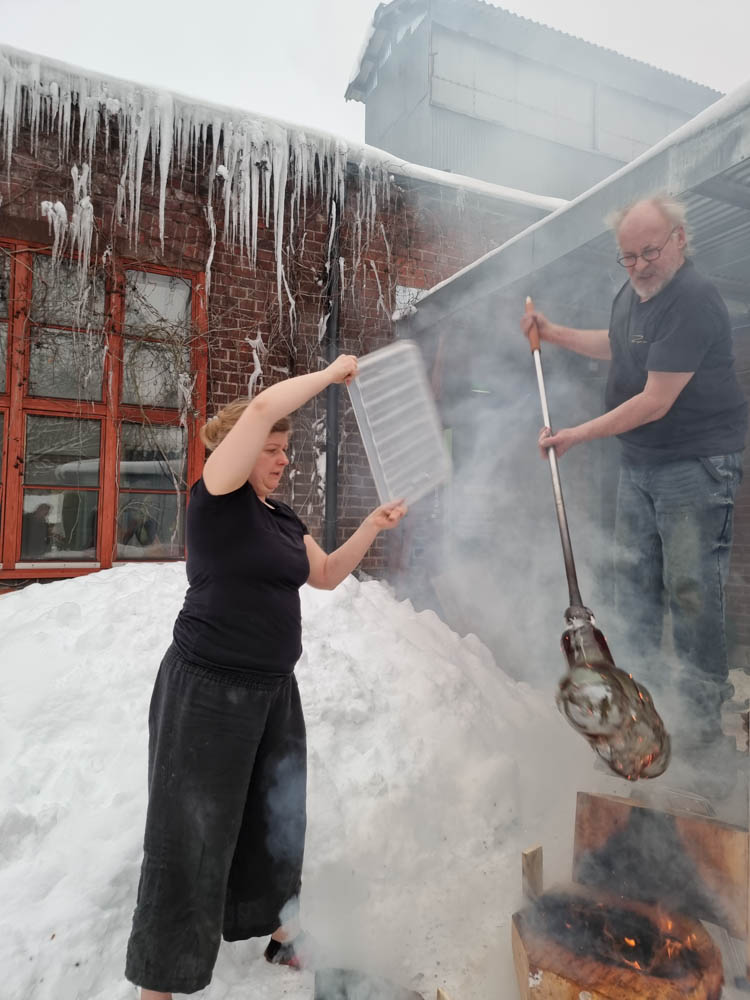
Exuvia - sculpture
Kuvanveistäjäpariskunta Pekka ja Teija Isorättyä
Sculptors Pekka and Teija Isorättyä's sculpture Exuvia in the H building of Vaasa Central Hospital shows the Okatytönkorento, whose habitat is the bays of seas and lakes. The Isorättyät got the idea for the piece while sailing in the waters of Merenkurku on a hot summer morning. Around the boat flew a large group of turquoise-blue Okatytön dragonflies, just like at a fairy prom.

Taiteilijapariskunta Teija ja Pekka ja Isorättyän teoksissa on myötätuntoa ja huumoria
Olemme kuvanveistäjäpariskunta ja molemmat olemme syntyneet 1980 Torniossa. Nykyisin työskentelemme Helsingissä. Taidetta teemme yhdessä jakaen luomisprosessin kokonaan. Veistostemme materiaalit ja tekniikat valitsemme veistoksen paikkaan, aiheeseen tai tilanteeseen liittyen ja jokaisen teoksen kohdalla etsimme ja opimme mielellään uutta. Materiaalivalinnat kannattelevat teoksen tarinaa ja luovat jännitteitä. Veistoksemme sisältävät usein mediataiteen, biotaiteen ja ympäristötaiteen ulottuvuuksia, joihin liittyvät kierrätetyt materiaalit, mekaaninen liike ja robotiikka. Taiteemme aiheissa on läsnä orgaanisten ja epäorgaanisten elämänmuotojen kirjo, ja veistoksemme luovat empaattisen huumorin kautta näkökulmia olioiden sieluun.
Taiteellinen yhteistyömme alkoi vuonna 2006 Taiteen Maisteri lopputyönäyttelystä Aalto-yliopistossa Helsingissä. Ensimmäinen museonäyttelymme oli Mexico cityssä Museo Ex Teresa Arte Actualissa vuonna 2008, jota seurasivat näyttelyt Diego Rivera Anahuacalli -museossa ja Polyforum Siquierosissa vuonna 2009. Meksikosta muutimme Berliiniin, jossa toiminta perustamassamme taidetilassa InvalidRobot Factoryssa jatkui vuoteen 2013 asti. Sen jälkeen teimme taidetta merellisissä ympäristöissä Itämerellä, Karibialla ja Kobessa Japanissa. 2019 perustimme Kamppiin Helsinkiin taiteilijastudion, jossa olemme toteuttaneet suuren mittakaavan veistoksemme yhdessä oman studioryhmän kanssa.
Olemme olleet kansainvälisesti esillä useissa gallerioissa ja museoissa, mukaan lukien Kobe Studios, Japan; Ierimonti Gallery, New York City ja KIASMA Museum of Contemporary Art, Helsinki. Vuonna 2017 olimme ehdolla Ars Fennica -taidepalkinnon saajaksi. Meidän viimeisimpiä julkisia veistoksia ovat Kojamo (2021), 15 metriä pitkä ja 5 metriä korkea kalamuoto ja Bass string wings Jyrki Kankaan muistomerkki 2022, 6 metriä korkea lintumainen muoto, jota on mahdollista soittaa.
Photos: Sami Pulkkinen
Making “Exuvia”
Exuvia- teoksen aihe on biologinen tapahtuma, korennontoukan kuoriutuminen. Muodonmuutos sisältää myös vahvaa symboliikkaa voimautumisesta ja resilienssistä.
Veistoksen esittämä laji on Okatytönkorento, jonka elinympäristönä ovat meren- ja järvien lahdet. Toisin kuin suurin osa muista tytönkorentolajeista, okatytönkorento lentää usein myös merellä avoveden yllä. Ajatus exuviasta syntyikin merellä. Olimme purjehtimassa Merenkurkun alueella ja eräänä kuumana kesäaamuna heräsimme kuin keskelle keijukaisten tanssiaisia. Veneemme ympärillä lenteli suuri joukko turkoosinsinisiä tytönkorentoja.
Making of "Exuvia".
Kuoriutumisen koittaessa okatytönkorennon toukka kiipeää kortta pitkin ylös vedestä ja kuivattelee itseään auringossa. Pian toukkanahka halkeaa päältä ja aikuinen korento ryömii esiin. Se oikoo siipensä ja valmistautuu lentämään, aloittamaan uuden elämän. Entinen vartalo, toukkanahka eli exuvia jää jälkeen lasimaiseksi pieneksi aarteeksi, muistuttamaan monimuotoisen elämän ihmeistä. Okatytönkorennon exuvioita löytyy Merenkurkun rantakaislikoista. Useimmiten exuviat ovat melko lähellä vettä kasvin varrella.
